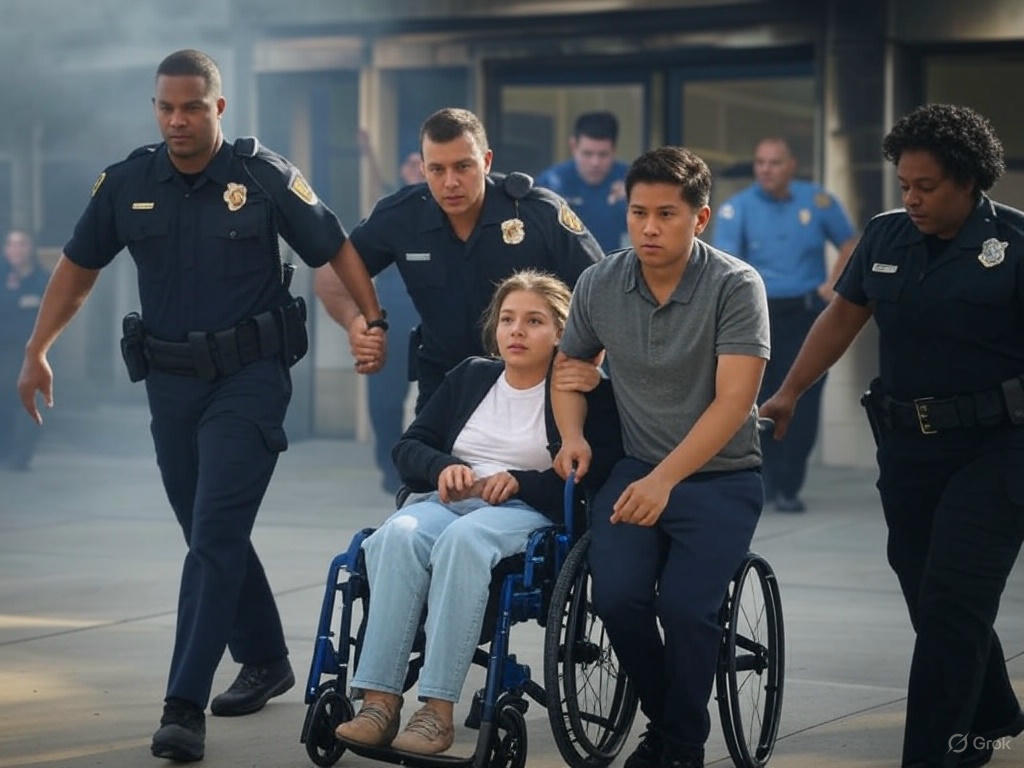Evacuations
Each Campus building has designated areas of assembly for disabled persons for evacuation in an emergency situation.
General Evacuation Steps
When an evacuation is ordered:
- Stay calm - Don’t panic.
- Exit immediately using the nearest and safest exit.
- Help others if you can, especially anyone needing assistance.
- Never use elevators unless told to by FDNY or emergency personnel.
- Go directly to your designated evacuation assembly area.
York College Emergency Notification Protocol
At York, safety communication must be fast, clear, and layered. We use three primary systems:
Public Address (PA System) - immediate, on-site voice alerts
Regroup - text, email, and app push alerts (faster than CUNY Alert)
CUNY Alert - systemwide emergency notification platform
When We Use Each System
Fire Drills / Fire Alarms (Evacuations Required)
- PA System Only - Announces evacuation immediately.
- No Regroup or CUNY Alert needed for drills/alarms, unless incident escalates.
Violent Threats (Active Shooter / lockdown)
- Step 1 – PA System: “Lockdown/evacuate now” - ensures everyone on-site hears instantly.
- Step 2 – Regroup: Reinforces message on phones, email, and app notifications.
- Step 3 – CUNY Alert: Broader reach to parents, media, and citywide CUNY network.
Inclement Weather / Campus Closures / Special Announcements
- Regroup + CUNY Alert
- PA not typically used (since most people are not physically on-site during these events).
Other Emergencies (Utility failures, police activity nearby, off campus conditions, etc.)
- PA System (if immediate danger on-site).
- Regroup Used as primary messaging and to provide situational updates and safety instructions
- CUNY Alert if event has wider community impact or lasts beyond the immediate situation.
Best Practice - Layered Communication
Start with PA for on-site emergencies: fastest and most certain.
Follow with Regroup for speed and redundancy (often reaches users within seconds).
Use CUNY Alert for campuswide disruptions and citywide visibility.
Think of it as:
- PA = Immediate voice command (everyone hears)
- Regroup = Fast digital backup (our community gets it quick)
- CUNY Alert = Systemwide broadcast (external, citywide, and public-facing)
Example Scenarios
Fire Drill → PA only.
Active Shooter → PA → Regroup → CUNY Alert.
Snow Closure → Regroup + CUNY Alert.
Hazardous Spill in Science Building → PA (evacuate building) → Regroup (instructions) → CUNY Alert (if broader closure).
This protocol ensures every message is heard, read, and reinforced.
The PA system comes first when seconds matter.
Regroup bridges the gap quickly.
CUNY Alert expands the message to the wider network.
Evacuation Tips for Assisting Persons with Disabilities
If you encounter someone with a disability during an emergency:
- Always ask how to help. Every person’s needs are different.
- Don’t assume—ask. Ask if they need help, how they’d prefer to be moved, and if important items should go with them.
- Use designated “Evacuation Assembly Areas.” These are safe waiting points for those who cannot evacuate on their own until help arrives.
Specific Tips by Disability:

For individuals with mobility impairments:
Help clear obstacles or debris if it's safe to do so.
Move the person to the nearest enclosed stairwell far from danger if they can't evacuate.
For individuals with visual disabilities:
Give clear, verbal directions—don’t just grab them.
Ask if they’d like to hold your arm as you lead them to safety.
For individuals with hearing impairments:
Get their attention with a light touch or eye contact.
Use gestures, write notes, or point clearly to exits if needed.
Designated “Evacuation Assembly Areas” for Disabled Persons
These safe zones are clearly marked with “Evacuation Assembly Area” signs. Here's where to go:
A-Core Building
Lower Level:
- LB Corridor inside Stair #7
- LF Corridor inside Stair #4
1st Floor:
- 1D Corridor near Cafeteria
- Liberty Ave entrance/exit (ramp)
2nd Floor:
- 2D Corridor in Stairwell #2
3rd Floor:
- 3D & 3F Corridors next to Stairs #2 & #3
- Inside Library next to Stair #9
- 3H Corridor next to Stair #11
4th Floor:
- 4F Corridor next to Stair #3
- 4M Corridor next to Stair #8
Classroom Building
Stairway adjacent to the elevator
Science Building
Stairway adjacent to the elevator
Lower Level Exit to Evans Road
HPE Building
Lower Level Exit to South Field
What Public Safety Does
Maintains class and office schedules of students needing evacuation assistance.
Checks all “Disabled Staging Areas” during emergencies.
Coordinates with emergency responders for safe evacuations.
Quick Reminders
Never use elevators unless authorized.
Only attempt rescue if someone is in immediate danger and you’re trained.
Stay alert. Stay calm. Help where you can.
Need Help or Have Questions?
York College Public Safety is here for you.
Academic Core Building, Room 1M02
Emergencies: 718-262-2222
Info & Questions: 718-262-2222
Visit Our Website
Safety is a shared responsibility.
Take a few minutes to learn these steps—it can make all the difference in an emergency
Revised: August 26, 2025